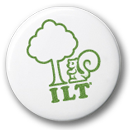Minimizing air conditioning (AC) use is an effective way to reduce energy consumption, lower utility bills, and decrease your environmental footprint. Here are several strategies to keep your home cool and comfortable while minimizing the need for air conditioning:
1. Improve Home Insulation
Seal and Insulate
Proper insulation keeps your home cool in summer and warm in winter by reducing heat exchange.
Insulate Attics and Walls: Use high-quality insulation in attics, walls, and floors to prevent heat from entering your home.
Seal Gaps and Cracks: Check for and seal gaps around windows, doors, and other openings where warm air can enter or cool air can escape.
Weatherstripping and Caulking: Apply weatherstripping around doors and windows and caulk any gaps to improve energy efficiency.
2. Optimize Window Use
Use Blinds and Curtains
Manage sunlight to control indoor temperatures.
Reflective or Thermal Curtains: These can significantly reduce heat gain by reflecting sunlight away from your windows.
Close Blinds During the Day: Keep blinds or shades closed during the hottest parts of the day to block direct sunlight.
Window Films and Tints
Apply reflective or tinted films to windows to reduce heat gain.
Reflective Films: These can block up to 70% of solar heat, keeping your home cooler.
Tinted Films: Reduce glare and heat without significantly darkening your rooms.
3. Use Fans Effectively
Ceiling Fans
Ceiling fans circulate air, making rooms feel cooler without lowering the temperature.
Run Fans Counterclockwise in Summer: Set your ceiling fans to rotate counterclockwise in summer to create a cooling breeze.
Adjust Speeds: Use higher speeds on particularly hot days for more airflow.
Portable and Window Fans
Use fans to enhance ventilation and promote air circulation.
Place Fans Strategically: Position fans to blow air out of windows on one side of your home and pull cooler air in on the opposite side.
Exhaust Fans: Use exhaust fans in bathrooms and kitchens to remove hot, humid air.
4. Enhance Natural Ventilation
Cross Ventilation
Encourage a flow of air through your home by strategically opening windows and doors.
Open Windows on Opposite Sides: Open windows on opposite sides of a room or home to create a cross breeze.
Night Ventilation: Open windows at night to let cooler air in and close them in the morning to trap the cool air inside.
Ventilation Techniques
Use specific techniques to maximize natural ventilation.
Stack Ventilation: Utilize high and low windows or vents to promote upward air movement, especially effective in multi-story homes.
Wind Catchers: Architectural features that direct outside air into your home and expel warm air can be highly effective.
5. Adopt Cool Roofing and Landscaping
Cool Roofs
Cool roofs reflect more sunlight and absorb less heat than standard roofs.
Light-Colored or Reflective Materials: Use roofing materials that reflect more solar energy and stay cooler in the sun.
Green Roofs: Plant-covered roofs provide natural insulation and reduce heat absorption.
Landscaping for Shade
Use plants and trees to create natural shade and cool your home.
Shade Trees: Plant deciduous trees on the south and west sides of your home to block summer sun while allowing winter sun through.
Vines and Green Walls: Grow climbing plants on trellises or walls to provide natural cooling.
6. Optimize Home Layout and Design
Zoned Cooling
Focus cooling efforts on occupied areas rather than the entire home.
Close Off Unused Rooms: Shut doors to unused rooms to keep cool air where it’s needed.
Zoning Systems: Consider installing a zoning system with separate thermostats for different areas of your home.
Reflective and Cool Materials
Use materials that minimize heat absorption inside your home.
Light-Colored Interiors: Light-colored walls, floors, and furnishings reflect heat rather than absorb it.
Thermal Mass: Materials like concrete and brick can absorb and slowly release heat, helping to regulate indoor temperatures.
7. Adopt Energy-Saving Behaviors
Limit Heat-Generating Activities
Reduce the use of appliances and activities that generate heat.
Cook Outside or Use Microwave: Grill outdoors or use a microwave instead of the oven to keep your kitchen cool.
Avoid Heat-Generating Appliances: Limit the use of dryers, dishwashers, and other heat-producing appliances during the hottest parts of the day.
Unplug Electronics
Electronic devices generate heat even when turned off.
Unplug Unused Devices: Disconnect chargers, computers, and other electronics when not in use.
Power Strips: Use power strips to easily switch off multiple devices at once.
8. Use Efficient AC Practices When Necessary
Programmable Thermostats
Optimize AC use with programmable or smart thermostats.
Set Higher Temperatures When Away: Program the thermostat to increase the temperature when you’re not home and lower it before you return.
Adjust for Sleep: Set the thermostat to a slightly higher temperature during the night, using fans for comfort.
Regular Maintenance
Keep your AC system running efficiently.
Clean Filters: Replace or clean AC filters regularly to ensure optimal performance.
Check for Leaks: Inspect ductwork for leaks and seal them to improve efficiency.
Annual Tune-Up: Have your AC system professionally serviced once a year to maintain efficiency.
Conclusion
By integrating these strategies, you can significantly reduce your reliance on air conditioning, lower your energy consumption, and create a more comfortable and environmentally friendly living space. Combining good design, natural cooling techniques, efficient appliances, and thoughtful behaviors can help keep your home cool and reduce your environmental impact.

